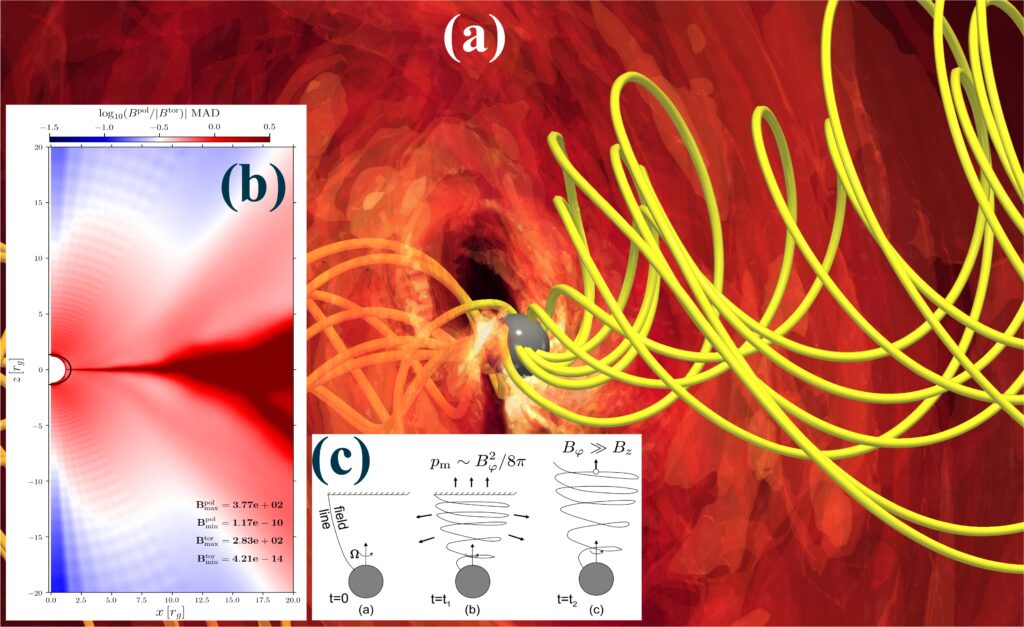The astrophysical signatures of powerful jets at different scales — stellar compact objects and supermassive black holes — call attention to astronomers and astrophysicists due to the wide range of output energy, producing electromagnetic emissions from radio band to near-infrared, X-rays, and high-energy gamma-rays. Recent multi-wavelength and multi-scale observations of the M87 jet show a high precision the morphology of the jet launching region.
Understanding the mechanism of jet launching is an exciting topic in modern astrophysics. A widely accepted model proposes that magnetic fields could extract rotational energy from the black hole. Where the poloidal magnetic field becomes twisted due to frame-dragging effects of the spinning black hole, and a toroidal magnetic field develops. Such configuration generates magnetic pressure providing the power to launch the jet. The model is called Blandford–Znajek mechanism.
